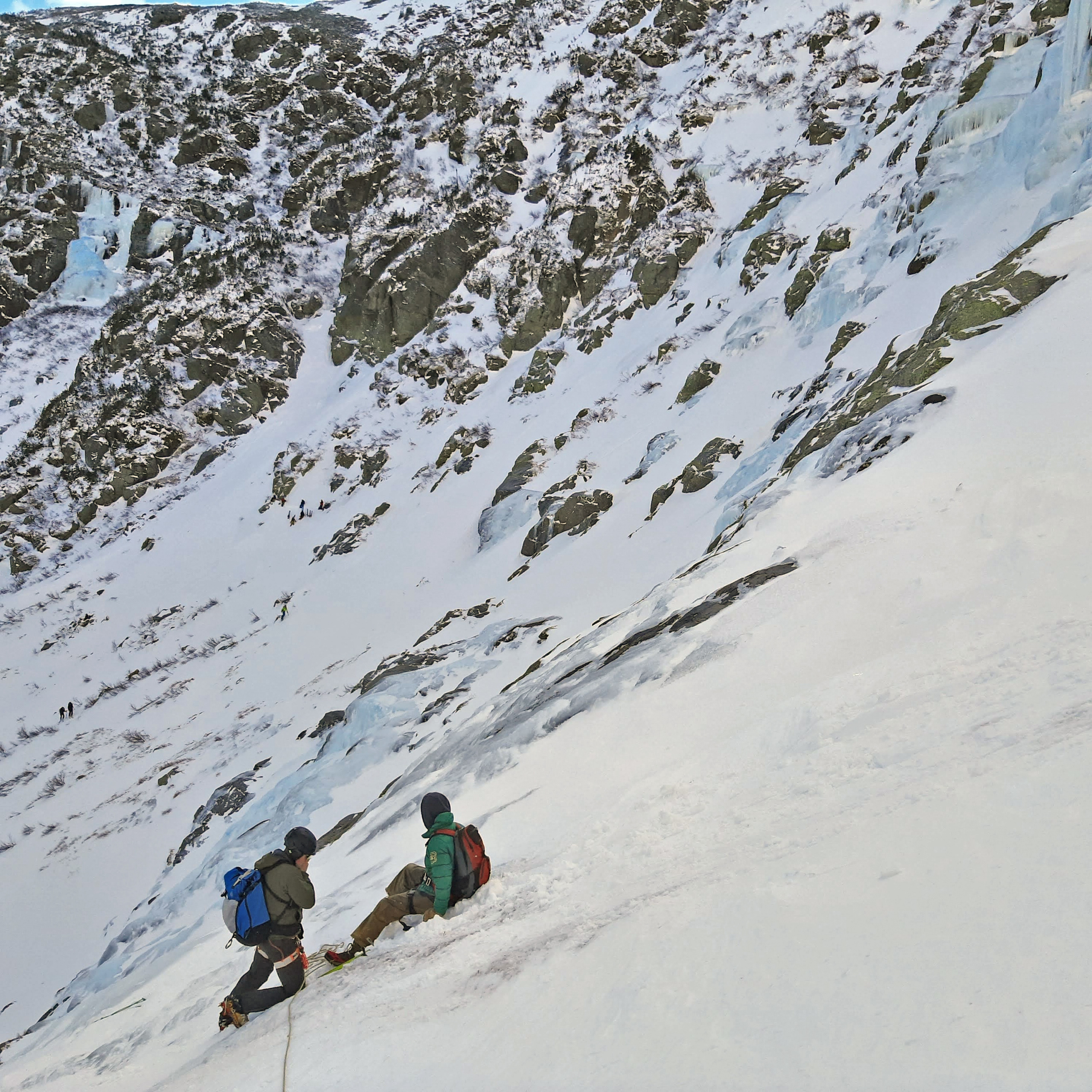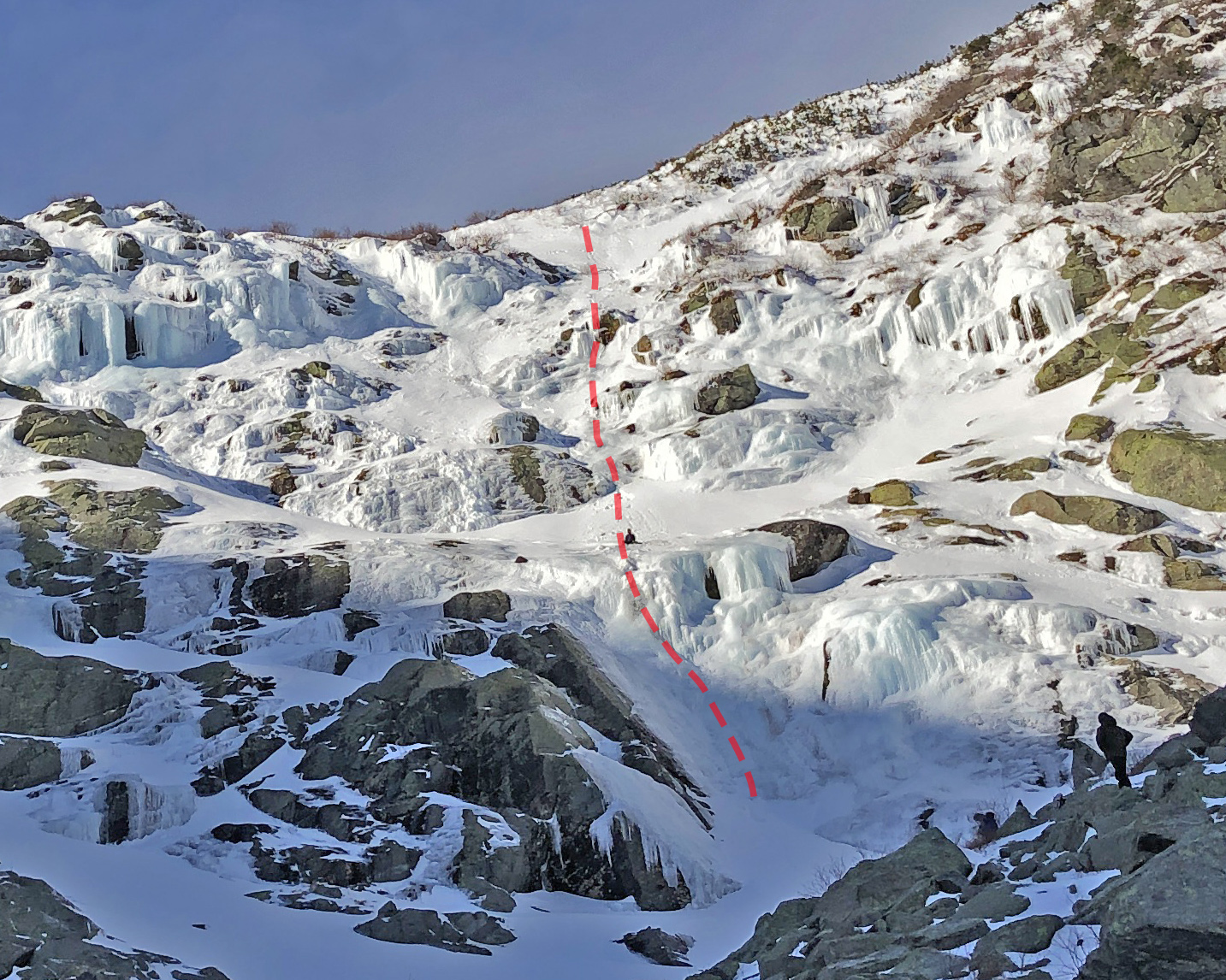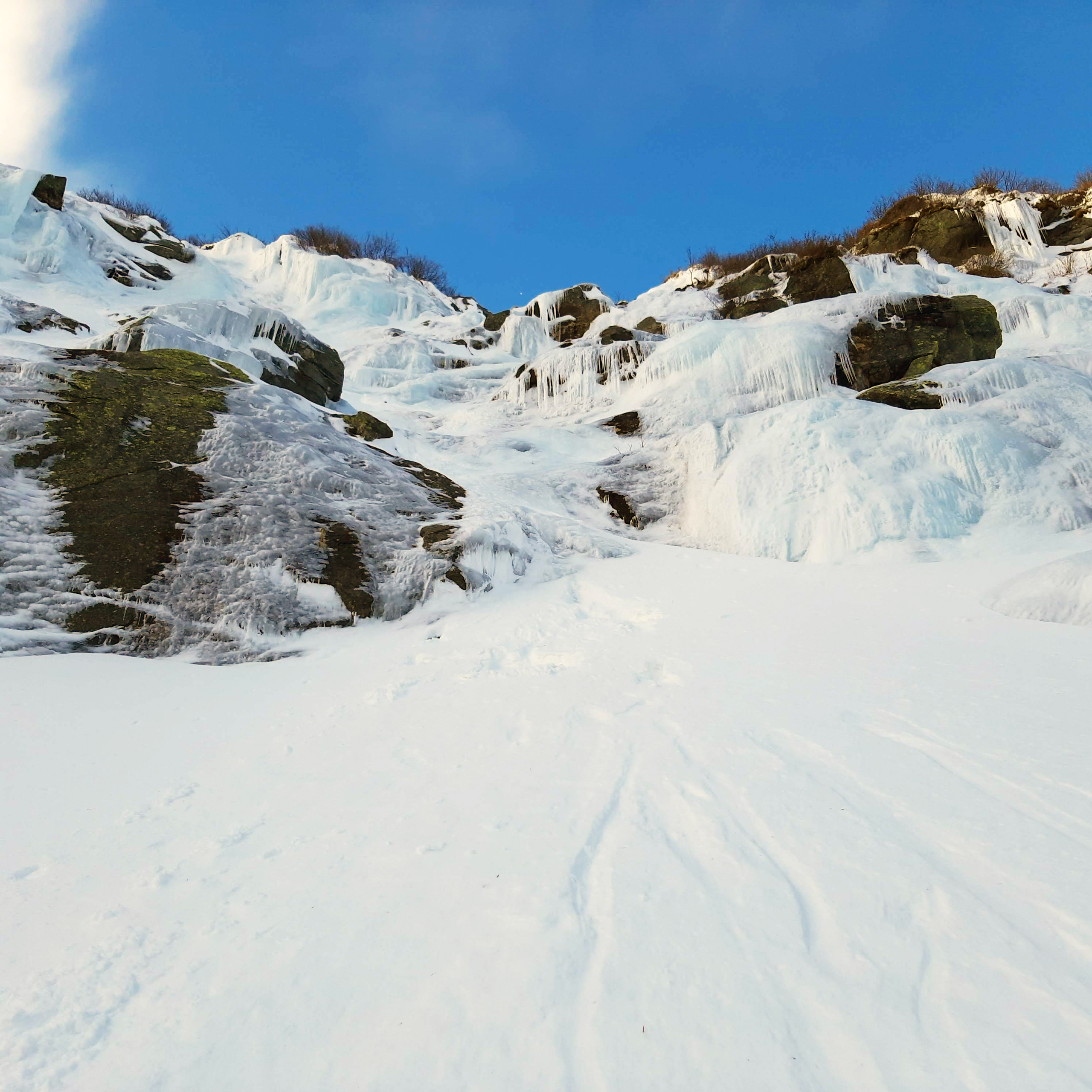Events:
On the morning of Saturday, January 9, 2021, two 20 year old males were ascending the Tuckerman Ravine Trail. Around 11 am, witnesses noted these two individuals on foot, falling near the rollover at the top of the ravine. Both individuals fell around 500 vertical feet, impacting exposed boulders and ice along the way. One came to a stop on a ledge above the final ice cliff while the other fell past this point and was described as being airborne until he landed on his upper back in the snow below the ice cliff.
The incident was reported to snow rangers shortly after noon. Both patients were reportedly conscious, though one potentially had an altered level of consciousness. A hasty team departed Hermit Lake with an EMT medical pack and AED. Additional personnel followed close behind with technical rescue gear.
At 12:30 pm, en route to the ravine, the hasty team encountered one patient walking downhill with a bystander. This was the individual who had landed at the base of the ice cliff. His clothing was wet, so he had been stripped of the wet clothing and given a dry jacket, helmet, and trekking poles. After a patient assessment, it was determined that he should continue on foot, assisted, to the USFS cabin at Hermit Lake for further assessment and rewarming.
Upon arrival at Lunch Rocks, snow rangers determined that the safest and most expedient access to the 2nd patient was to ascend steep snow to the right of the patient, rather than directly up the ice cliff. Snow rangers reached this patient shortly after 1 pm. He was chilled, as he had been sitting on the snow for about 2 hours, so he was given an extra jacket and gloves. The patient was provided a harness and rope belay, and guided down steep snow to the ravine floor. A technical litter and anchor had been prepared, but was deemed unnecessary as his injuries were limited. He was also comfortable walking to the cabin for further assessment.

Rescuer and patient looking across the ravine at exposed hazards lower in the runouts of Chute and Center Headwall, which are not yet full-length ski runs.
Analysis:
Both individuals were equipped with leather hiking boots and microspikes. The pair had trekking poles in the mix, but no ice axes. They were navigating using the GPS in their phones. One individual had been on the same route 4-5 times before, while the other was there for the first time. Their objective was to ascend the Tuckerman Ravine Trail, and presumably continue to the summit.
One patient reported reaching a point where his microspikes provided insufficient traction. He said he fell forward like a starfish, slid over an ice bulge, and continued falling. His partner saw this happen, lost his footing, and subsequently fell as well. Both individuals impacted multiple exposed boulders and ice bulges during their descent.
This season has seen slower snowpack development than recent years. December accumulation took a big hit from the Christmas rain event, and January has provided less than 6” of new snow so far. As such, exposed hazards abound and present a minefield of challenges and consequences.
At the time, the aspect they were in was intermittently exposed to solar radiation through fog and scattered clouds. Perhaps more importantly, temperatures were relatively warm (25F at the summit), so the snow may have been more forgiving to soft boots than otherwise would have been the case. However, this very well could have provided a false sense of confidence that evaporated once they had to navigate bare ice with inadequate traction. The two hikers encountered difficulties near the top of the ravine, where wind often scours the soft snow and leaves a hard, icy surface.
In the winter, the Tuckerman Ravine Trail through the headwall becomes a true mountaineering objective, complete with steep sections of hard frozen snow, cliffs of ice, and snow slopes capable of producing an avalanche. Individuals choosing to climb this route should be prepared with proper mountaineering equipment and the skills to use them. Rigid boots, crampons, two ice axes, avalanche rescue gear (beacon, probe, and shovel), and a roped system to protect against a long dangerous fall are often required to climb through this steep section safely.
Ultimately, these individuals were incredibly lucky. Despite numerous bumps and bruises, neither experienced significant trauma. Despite inadequate gear for conditions in the ravine, multiple bystanders were willing to provide equipment, support, and reassurance, and to seek qualified help to extricate patients from steep terrain.
Mount Washington is relatively accessible, and oftentimes people manage to get away with an objective despite a lack of preparation and appropriate equipment. However, this accessibility means there are also plentiful resources available. Trip planning must consider weather and avalanche conditions, which are provided locally by the Mount Washington Observatory and Mount Washington Avalanche Center. Trip planning must consider trail conditions and suggested routes. Caretakers provide this readily at Hermit Lake and Harvard Cabin, as well as AMC staff at Pinkham Notch. Maps and appropriate equipment can be acquired from numerous retail locations and guide services in the area. Local guide services are also a great way to learn to use said equipment, and learn best practices for movement and decision making in the mountains.
While we all learn from mistakes, we can stack the cards in our favor to avoid mistakes such as these. Seek relevant information, don’t skimp on safety gear, and embrace continuous education in mountain sense.

